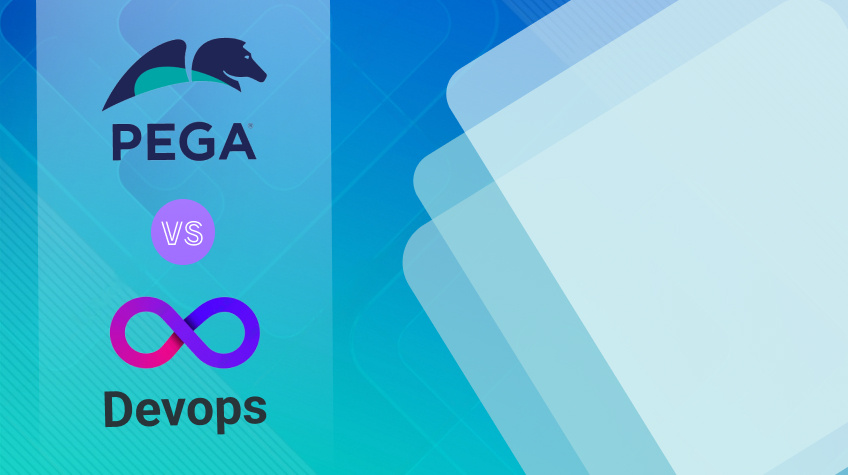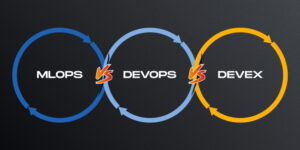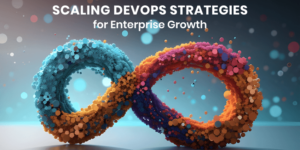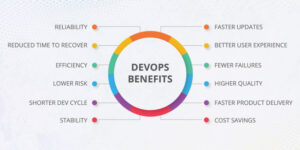
In the world of software development, there are two powerful forces that have been gaining immense popularity: Pega and DevOps. Both are known for their ability to revolutionize how companies develop, deploy, and manage their applications. But who is the true champion? In this epic showdown, we will delve into the strengths and weaknesses of both Pega and DevOps, examining their features, capabilities, and impact on organizations. Get ready as we witness a battle for supremacy between these two titans of the software development arena.
Pega and DevOps in the Tech World
Pega and DevOps are two powerful forces in the tech world, each bringing their own unique strengths to the table. Pega is known for its exceptional customer relationship management (CRM) capabilities, enabling businesses to seamlessly manage their interactions with customers. On the other hand, DevOps focuses on streamlining development and operations processes through continuous integration and delivery.
But what happens when these two powerhouses collide? The result is nothing short of a technological revolution. By integrating Pega with DevOps practices, organizations can unlock a new level of efficiency and agility. This integration allows teams to rapidly develop, test, and deploy Pega applications while ensuring seamless collaboration between developers, testers, and operations professionals.
With this union comes an array of benefits: shorter turnaround times for application updates, improved collaboration among teams with faster feedback cycles, reduced risk of errors through automated testing and deployments, enhanced scalability for meeting increasing demands on applications – just to name a few.
Furthermore, marrying Pega with DevOps paves the way for achieving high-quality software releases at an accelerated pace. Through automation tools like Jenkins or GitLab CI/CD pipelines combined with agile methodologies such as Scrum or Kanban enable teams to deliver feature-rich applications more quickly without compromising on quality or stability.
The convergence of Pega and DevOps brings forth a powerful concoction that transcends traditional limitations in software development. To gain more information join Pega Certification Training!
Understanding Pega: Features and Benefits
Pega is one of the leading BPM (Business Process Management) platforms in the market today, known for its powerful features and benefits. It offers a comprehensive suite of tools and solutions that enable organizations to automate, optimize, and manage their business processes effectively.
One of the standout features of Pega is its ability to provide a unified platform for both business and IT users. This means that business users can easily design and modify processes without relying on IT expertise, reducing dependency on developers and speeding up time-to-market for process changes. Additionally, Pega’s low-code capabilities allow developers to quickly build applications by leveraging pre-built components and visual tools.
Another major advantage of Pega is its intelligent automation capabilities. By leveraging artificial intelligence (AI) and machine learning algorithms, Pega can analyze vast amounts of data in real-time to make smart decisions, automate repetitive tasks, personalize customer experiences, detect fraud patterns, and more. This not only enhances operational efficiency but also helps deliver better customer outcomes.
understanding the key features and benefits of Pega can help businesses harness its full potential for process automation and optimization. Its unified platform approach empowers both business users and developers while its intelligent automation capabilities enable organizations to achieve higher levels of efficiency and personalization. As technology continues to evolve rapidly, integrating Pega with DevOps practices will be crucial in ensuring seamless collaboration between different teams throughout the software development lifecycle.
Embracing DevOps: A Revolution in Software Development
In the realm of software development, DevOps has emerged as a juggernaut, revolutionizing the way projects are executed and delivered. Adopting DevOps necessitates breaking down conventional silos between development and operations teams, enabling cooperation, agility, and innovation. It is a mindset shift that emphasizes continuous integration, delivery, and deployment.
One key advantage of this approach is speed. By automating manual processes and streamlining workflows, DevOps allows for faster time to market. This capability not only helps organizations stay ahead of the competition but also enables them to respond quickly to changing customer demands.
Another crucial benefit is improved quality. With close collaboration between developers and operations professionals throughout the entire software development life cycle, issues can be identified early on and fixed promptly. This leads to fewer production defects and ultimately enhances user experience.
Overall, embracing DevOps breaks down barriers and facilitates cross-functional cooperation, enabling organizations to build robust applications more efficiently. In today’s fast-paced digital landscape where speed matters just as much as quality does, it’s no wonder that DevOps has quickly become a game-changer in software development.
The Clash: Pega vs. DevOps
In the world of software development and business process automation, there has been a constant clash between two powerful forces: Pega and DevOps. Both have their own distinct advantages and capabilities, but which one will come out on top? Let’s take a closer look at this ultimate showdown.
Pega, with its low-code platform, offers rapid application development and customization capabilities that can significantly speed up the delivery of new applications. On the other hand, DevOps is all about streamlining the software development lifecycle by integrating development and operations teams to enhance collaboration and continuous delivery. While Pega may be more focused on delivering pre-built solutions, DevOps emphasizes on empowering teams to develop and deploy software efficiently.
The clash between Pega and DevOps lies in their approaches towards application development – one focusing on speed with low-code tools while the other prioritizes collaboration through integrated processes. However, it’s important to note that these two forces are not mutually exclusive but rather complementary to each other. Finding a balance between rapid application delivery with Pega’s low-code platform and efficient deployment with DevOps methodologies could pave the way for enhanced productivity and success in modern software development environments. Ultimately, it is not about choosing one over the other but leveraging both to achieve business objectives effectively in today’s competitive landscape.
Considerations for Implementation
When considering the implementation of Pega and DevOps, there are several key factors to take into account. First and foremost, it is important to have a clear understanding of your organization’s current processes and infrastructure. This will help determine how Pega and DevOps can be integrated seamlessly into your existing systems. Additionally, it is crucial to involve all relevant stakeholders early on in the process, as their input will be invaluable for tailoring the implementation strategy to meet the specific needs of your organization.
Furthermore, it is essential to allocate sufficient time and resources for training and upskilling employees. Transitioning to new technologies such as Pega and implementing DevOps practices may require a shift in mindset and skillset among team members. Providing comprehensive training programs or bringing in external experts can help alleviate any challenges that arise during this phase.
Lastly, ongoing monitoring and evaluation are vital components of successful implementation. Regularly assessing the effectiveness of Pega and DevOps within your organization will not only enable you to identify any areas for improvement but also ensure that you are maximizing their potential value. Flexibility and adaptability should be encouraged as part of this process, allowing for continuous refinement based on feedback from both users and stakeholders.
By carefully considering these aspects when implementing Pega with DevOps practices, organizations can set themselves up for success by harnessing the full power of these tools while minimizing disruptions during adoption.
Conclusion
In conclusion, the battle between Pega and DevOps for supremacy in the world of software development is a fascinating duel that highlights the evolving landscape of technology. While Pega offers a comprehensive platform with its low-code capabilities, DevOps relies on agile methodology to streamline the entire software development lifecycle. Both approaches have their strengths and weaknesses, making it difficult to crown an ultimate winner.
One key takeaway from this showdown is that organizations need to assess their specific needs and objectives before deciding which approach to embrace. Pega may be ideal for businesses seeking rapid application development and flexibility, while DevOps enables teams to collaborate seamlessly and achieve continuous delivery. By understanding their requirements, companies can make informed decisions that best align with their unique goals.
Moreover, it’s worth noting that technology is constantly evolving, and new advancements can reshape the playing field at any given time. It’s crucial for organizations to stay updated on emerging trends and be responsive to changes in the industry. As both Pega and DevOps continue to mature and evolve, it will be intriguing to see how they push boundaries and adapt in order to maintain relevance in this rapidly changing landscape of software development.
In essence, the showdown between Pega and DevOps demonstrates that there is no one-size-fits-all solution when it comes to software development methodologies. Each approach brings its own set of advantages while addressing different aspects of the process.
Author Bio
Pooja Bavireddy is a tech-savvy worker working as a Research Analyst . She is passionate about researching various technologies ,startups, and dreams big to accomplish varying goals.She is an expert in presenting information on market-leading technologies such as Pega, Cyberark, SAP IBP, Webmethods, SCCM, SAP MDG, SAP FICO, Denodo, AWS Devops and others.






